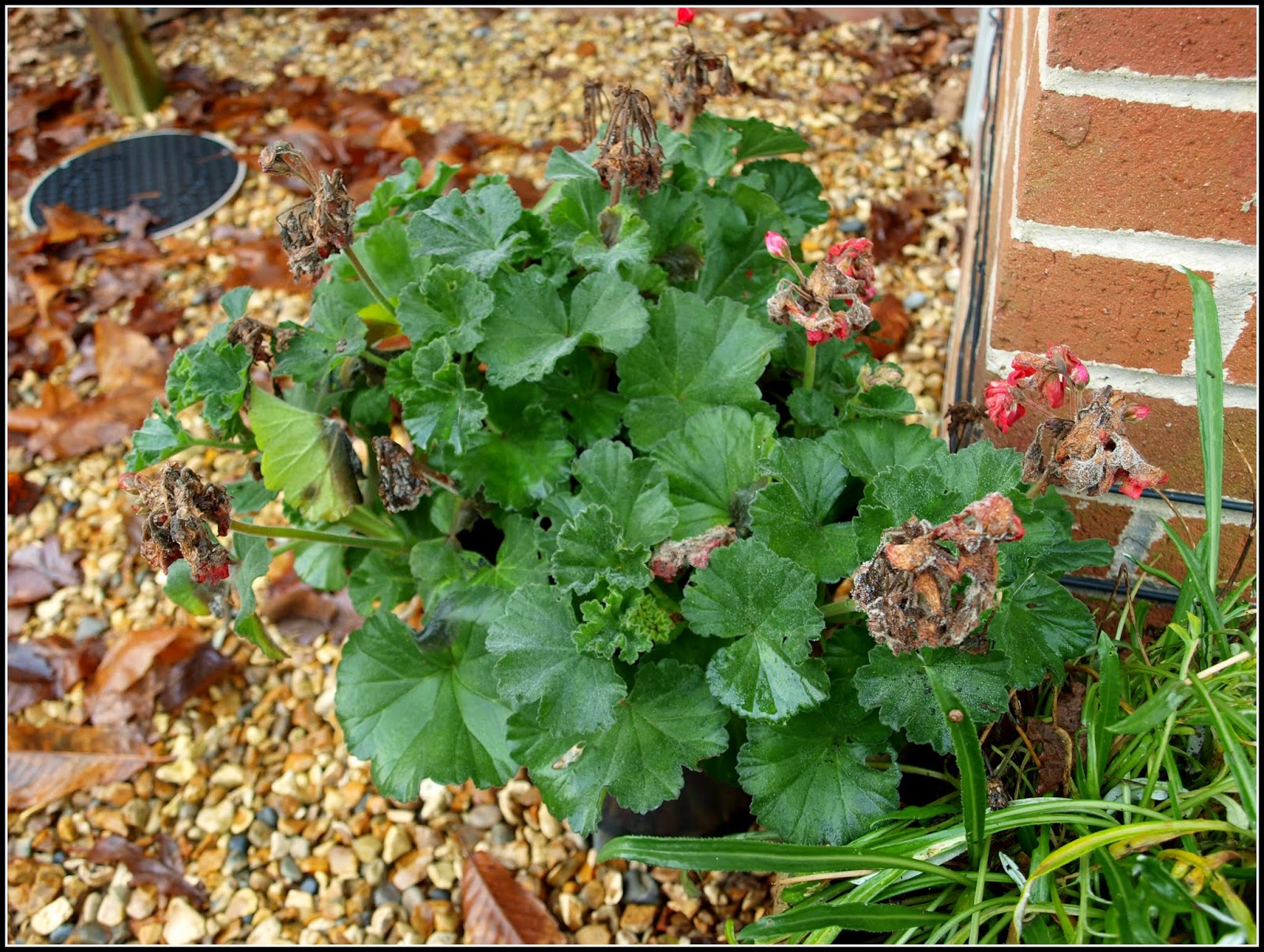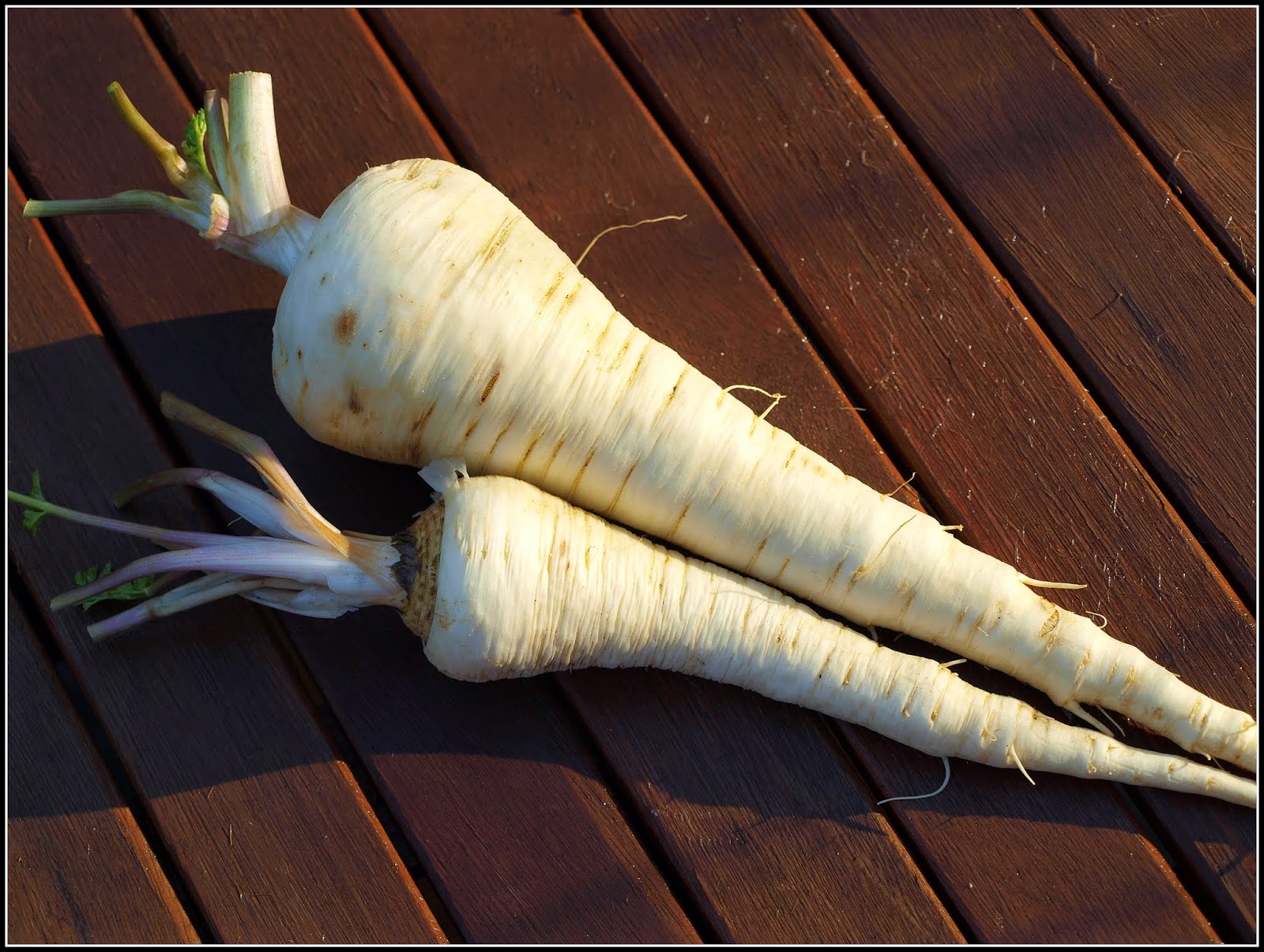Not that curry is necessarily un-British. We eat lots of it. British-style curries are normally one of two types: either so hot with chilli that they burn your mouth (much favoured by the younger, male element of our population) or so mild that they barely merit the name "curry" (one teaspoon of Madras curry-powder in a meal for four). My dish is mid-way between these two extremes, and uses a home-made curry powder which Jane makes in large batches from time to time. It is made from whole spices which are roasted and then ground. Very fragrant!
Before I go any further, let me just say that this is a dish of my own invention and doesn't follow any recipe.
 |
| Ingredients for stock and sauce. I forgot to include the tinned tomatoes! |
This is where it starts - poaching a whole chicken in big pan of water along with carrot, onion, leaf celery stalks, black peppercorns, curry leaves, a de-seeded chilli, fresh ginger, salt and (key ingredient) green Cardamoms. Normally I would put a Bay leaf and a couple of Cloves in to make a stock, but today I wanted a significantly different background note.
The chicken needs to poach at a low simmer for about an hour, after which the meat will be very tender and will slip off the bones very easily. I removed the breast and thigh portions and set them aside for later, while returning the rest of the carcass to the pot.
The stock was then boiled rapidly for about half an hour to concentrate it, and strained through a sieve. I must add that I tasted the stock a couple of times just to check that the Cardamoms had sufficiently infused it without being overpowering. Incidentally, I split the husks of the Cardamom pods to expose the seeds, which is where the real flavour comes from.
Now I made the sauce, gently cooking some sliced onions and a couple of cloves of garlic in some vegetable oil over a low heat to soften them, then stirring in a generous quantity of Jane's curry powder before adding a tin of chopped tomatoes and about half a litre of the stock. I also added a little of my home-made paprika to enhance the colour. This mixture was then cooked at a low simmer for about 15 minutes, allowed to cool a little and finally blended to a fine texture in the food-processor. At this point the majority of the cooking was complete.
 |
| Sauce prior to blending |
Later, I peeled, sliced and cooked a large mango. Normally I would not have needed to cook the mango at all, but I felt that it was not as ripe as I would have liked, so I warmed up some of the sauce and cooked the mango in it until it softened sufficiently. [Getting properly ripe mangoes is far from easy in the UK!]. When this was done, I layered the reserved chicken meat into a large casserole, covered it with the rest of the sauce and heated it thoroughly. (About an hour at 150C).
While this was going on I cooked some Basmati rice in the electric rice-cooker. Although the delicious aroma of the curry sauce was by this time pervading the whole house, I have to say that nothing compares to the wonderful smell of Basmati rice cooking!
During the afternoon I had used another mango to make a sambal (a bit like a salsa I suppose) to accompany the main dish. It consisted of chopped mango with some finely-diced red chilli, some Asian red shallot quick-pickled in red wine vinegar, moistened with the juice of a lime and garnished with toasted Cashew nuts and Leaf Celery microgreens.
 |
| The sambal served in an authentic Jaipur blue dish - bought in Jaipur! |
So here is the finished dish:
The contrast between the soft cooked mango and the rather crunchy mango in the sambal was very nice!
I was pleased with the result. Not too hot. Not too sweet. Just right. And whether by luck or by good judgement, the background taste (and smell) of Cardamom was subtle, but pleasantly noticeable. I don't know what an Indian person would make of this, but this is the sort of curry I like!






















































